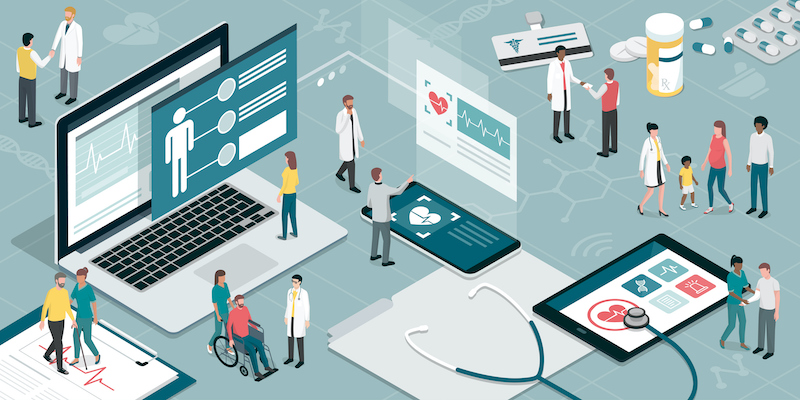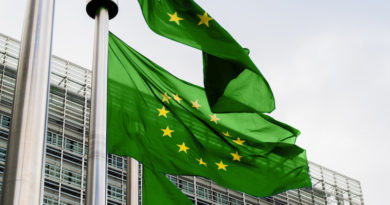
Prevention is the best cure – A plead for a European health union to solve medicine shortages
The Covid-19 pandemic made it painfully clear that shortages of medicines are heavily connected to the EU-Asian trade: 80% of the raw materials needed to create our active pharmaceutical ingredients (APIs) come from China and India. The current health crisis uncovered a problem that several European member states already identified. If we look at the Netherlands, but also in other European countries, we see a clear indication of rising shortages in medicines: official reports from the government body showcase that the number of shortages almost doubled every year since 2017. We are not only receiving alarming reports regarding shortages of everyday drugs such as paracetamol, but also for birth control pills, medicines to support the thyroid, several antibiotics and an inhibitor against Parkinson.
At this moment, the Dutch government is doing everything within its power to increase its supply in medicines. The scaling up of the ‘iron stock supply’, as they call it, from three to five months could redress 85% of all the medicine shortages. Yet, this is not a structural solution and this stock supply could lead to shortages elsewhere in the European Union. As always, prevention remains the best cure. How can we ensure that these shortages don’t evolve in the first place? The dependency on third countries for the delivery of raw materials and the ongoing shortages, require a proactive European approach.
The pharmaceutical strategy, released by the European Commission in November last year, is a first starting point and could be considered as a next step towards closer European cooperation on public health.
One of the objectives of the Pharmaceutical Strategy is to improve affordability, access and availability of medicines in Europe. At the heart of this agenda lays the diversification of the sources of supply for essential medicines and APIs and the reinforcement of manufacturing capacity within the EU, where possible. Action is required, given the trend where production of APIs and essential medicines is gradually moving outside of the European borders, exposing Europe’s issue of supply dependence once more. This debate is highly necessary to ensure the manufacturing resilience of the pharmaceutical industry within the European Union.
Although the reasons for Europe’s loss of manufacturing capacity are numerous, it is strategically important to identify and address each one of them. The pharmaceutical strategy underlines the need to have a good understanding of the current supply situation and its impact on the availability of medicines in the EU, as well as the need for clear policy directions to support a sustainable, predictable and flexible environment to secure supply of high quality medicines in Europe.
On top of the resilience of the manufacturing capacity, there is also a need to invest in and expand the innovation capacity of the European Union. This is the second pillar of the pharmaceutical strategy and is necessary to support the development of high quality, safe, effective and greener medicines.
Expertise and research, development and innovation are the core strengths of European companies and should be kept at the heart of the industrial competitiveness of the EU.
To solve the problem of medicine shortages, the pharmaceutical strategy alone will not be sufficient. We are also in desperate need to know of the results of the long-awaited study that the Commission is launching later this year to map out the main issues of medicine shortages. What is the scale of the problem of medicine shortages and how can we detect – and prevent – the vulnerabilities in the international supply chain?
Currently, several member states have a different approach when it comes to the definition of medicine shortages. France puts a drug on the shortlist when the delivery has a delay of 72 hours, while the Netherlands report a shortage when there is uncertainty of delivery after 14 days. The different approaches make it nearly impossible to enable a well-functioning system to deal with medicine shortages. Furthermore, these different approaches disable the capacity to make a correct estimation of the size of the problem in the shortages of drugs. Together with my liberal colleagues in the European Parliament, we are calling for a clear-cut definition European-wide.
Not only do we welcome a uniform definition, we need to monitor the supply chain more closely and improve our knowledge and insights in its vulnerable connections by creating a stronger European monitoring mechanism.
It is not rocket science what we need: we already have the European Medicines Agency (EMA), why not reinforce its capacities? As our responsible European Agency, EMA already possesses the expertise and the intelligence to perform this duty. The only thing the agency lacks is the mandate.
This reinforced role of the EMA would be helpful in developing an understanding of our interdependency within the international value chain. At this moment, manufacturers of medicines are not obliged to render information on (potential) obstacles within their production process, or even the location where the manufacturing is taking place. This way, it is nearly impossible to track where our medicines are coming from. This enforced monitoring system could improve the transparency within the international value chain of the drug production.
Together with the European Agency, the European Parliament is ready to become a proactive voice within the debate on medicine shortages, but it is up to the member states to establish a European Health Union. Our patients demand resolute action and more transparency; it is now up to us, the policy makers, to deliver.




